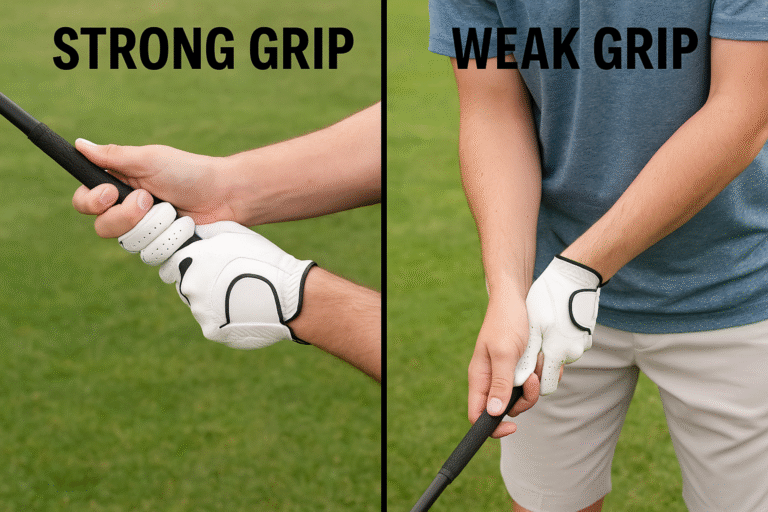Replacing or cleaning your golf grips is an essential part of maintaining your clubs. Whether you’ve just installed new grips or cleaned your old ones, knowing how long to let them dry is crucial for optimal performance.
Drying time depends on factors like the type of grip, the adhesive used, and environmental conditions. This article will guide you through the process, explain why drying time matters, and provide tips to ensure your grips are ready for your next round.
Why Drying Time Matters?
Proper drying time ensures that your golf grips are secure and perform well. If grips are not given enough time to dry, they may slip or twist during your swing, affecting your control and accuracy. On the other hand, rushing the process can lead to improper adhesion, reducing the lifespan of your grips.
Drying time also depends on whether you’re cleaning or replacing grips. Cleaned grips need time to air dry, while newly installed grips require time for the adhesive to set. Understanding the importance of drying time helps you avoid mistakes and keep your clubs in top condition.
How Long to Dry Golf Grips?
Drying Time for New Grips
When installing new grips, drying time is critical for the adhesive to set properly. Most grip adhesives require at least 24 hours to fully cure. During this time, avoid using the clubs to prevent the grips from shifting or coming loose. Some adhesives may dry faster, but it’s best to follow the manufacturer’s recommendations.
Environmental factors like temperature and humidity can also affect drying time. In cooler or more humid conditions, the adhesive may take longer to set. To speed up the process, store your clubs in a warm, dry place. Patience is key to ensuring your new grips are securely attached.
Drying Time for Cleaned Grips
If you’ve cleaned your golf grips, drying time is shorter compared to installing new ones. After washing your grips with soap and water or a specialized cleaner, let them air dry for at least 1-2 hours. Make sure they are completely dry before using them to avoid slipping during your swing.
For faster drying, use a clean towel to remove excess moisture and leave the clubs in a well-ventilated area. Avoid using heat sources like hairdryers, as they can damage the grip material. Properly dried grips will feel tacky and provide better control on the course.
Factors Affecting Drying Time
Several factors can influence how long it takes for golf grips to dry. The type of grip material plays a role—rubber grips dry faster than corded or hybrid grips. The adhesive used for new grips also affects drying time, with some formulas requiring longer curing periods.
Environmental conditions like temperature, humidity, and airflow can impact drying time as well. Warm, dry environments speed up the process, while cold or humid conditions slow it down. Understanding these factors helps you plan accordingly and ensure your grips are ready when you need them.
How to Speed Up Drying Time?
If you’re short on time, there are ways to speed up the drying process for your golf grips. For cleaned grips, use a clean towel to remove as much moisture as possible and place the clubs in a well-ventilated area. A fan can help circulate air and reduce drying time.
For new grips, choose a fast-drying adhesive and store the clubs in a warm, dry place. Avoid using heat sources, as they can damage the grips or affect the adhesive’s performance. While it’s tempting to rush, giving your grips enough time to dry ensures they perform well and last longer.
Signs Your Grips Are Fully Dry
Knowing when your grips are fully dry is important to avoid using them too soon. For cleaned grips, they should feel dry to the touch and slightly tacky. If they still feel damp or slippery, give them more time to air dry.
For new grips, check the adhesive’s curing time on the product label. The grips should feel secure and not move when you twist them gently. If you notice any shifting or looseness, let them dry for a few more hours. Properly dried grips will provide better performance and durability.
Common Mistakes to Avoid
One common mistake is not allowing enough drying time for new grips. Using the clubs too soon can cause the grips to slip or come loose, affecting your swing. Always follow the adhesive’s recommended curing time, even if the grips feel dry to the touch.
Another mistake is using heat to dry grips faster. High temperatures can damage the grip material or weaken the adhesive. Stick to air drying and avoid shortcuts to ensure your grips are properly set and ready for use.
How to Maintain Your Golf Grips?
Proper maintenance can extend the life of your golf grips and reduce the need for frequent replacements. Clean your grips regularly with soap and water or a specialized cleaner to remove dirt and oils. Let them dry completely before using them to maintain their tackiness and performance.
Inspect your grips for signs of wear, such as cracks, smooth spots, or loss of tackiness. Replacing worn grips ensures a secure hold and better control during your swing. Regular maintenance keeps your clubs in top condition and improves your overall game.
Choosing the Right Grips for Your Game
Selecting the right grips for your game can also affect drying time and performance. Rubber grips are easy to clean and dry quickly, while corded grips offer better traction but may take longer to dry. Consider your playing conditions and personal preferences when choosing grips.
If you frequently play in wet or humid conditions, opt for grips designed to provide better traction in those environments. Testing different grip types can help you find the best fit for your game and ensure optimal performance on the course.
Bonus; The Role of Grip Size in Drying Time
Grip size can also influence drying time, especially for new grips. Larger grips may require more adhesive and take longer to dry, while smaller grips dry faster. Ensure the grip size matches your hand size and playing style for better control and comfort.
When installing new grips, follow the manufacturer’s instructions for proper sizing and drying time. Using the correct grip size ensures a secure hold and reduces the risk of slipping during your swing.
How Often Should You Replace Your Grips?
The frequency of replacing your golf grips depends on how often you play and the conditions you play in. On average, grips should be replaced every 40-60 rounds or once a year. Worn grips can affect your grip pressure and control, leading to inconsistent shots.
Regularly inspect your grips for signs of wear and replace them as needed. Fresh grips provide better traction and comfort, improving your performance on the course. Proper maintenance and timely replacements keep your clubs in top condition.
Conclusion: Ensuring Proper Drying for Optimal Performance
Drying your golf grips properly is essential for maintaining their performance and longevity. Whether you’re installing new grips or cleaning old ones, giving them enough time to dry ensures a secure hold and better control during your swing. Follow the recommended drying times and avoid common mistakes to keep your clubs in top condition.
Regular maintenance and timely replacements also play a key role in optimizing your golf game. By taking care of your grips, you’ll enjoy better performance and a more enjoyable experience on the course. With the right approach, your grips will be ready for action whenever you are.
FAQs
1. Can I use my golf clubs immediately after cleaning the grips?
No, you should let the grips air dry for at least 1-2 hours after cleaning. Using them while damp can cause slipping and reduce control. Ensure they are completely dry before playing to maintain their tackiness and performance.
2. How do I know if my new grips are properly installed?
New grips should feel secure and not move when you twist them gently. Follow the adhesive’s recommended curing time, usually 24 hours, to ensure proper installation. If the grips shift or feel loose, let them dry longer.
3. What’s the best way to clean golf grips?
Use soap and water or a specialized grip cleaner to remove dirt and oils. Scrub gently with a brush or cloth, rinse thoroughly, and let the grips air dry completely. Regular cleaning maintains their tackiness and extends their lifespan.
Discover the meticulous and expert-driven process behind our product reviews at Sportic Media. Our comprehensive guide, led by industry veterans, ensures you get the most reliable and detailed insights into golf equipment. Dive into our methodical approach by visiting How We Test Products at Sportic Media: A Comprehensive Guide
.






